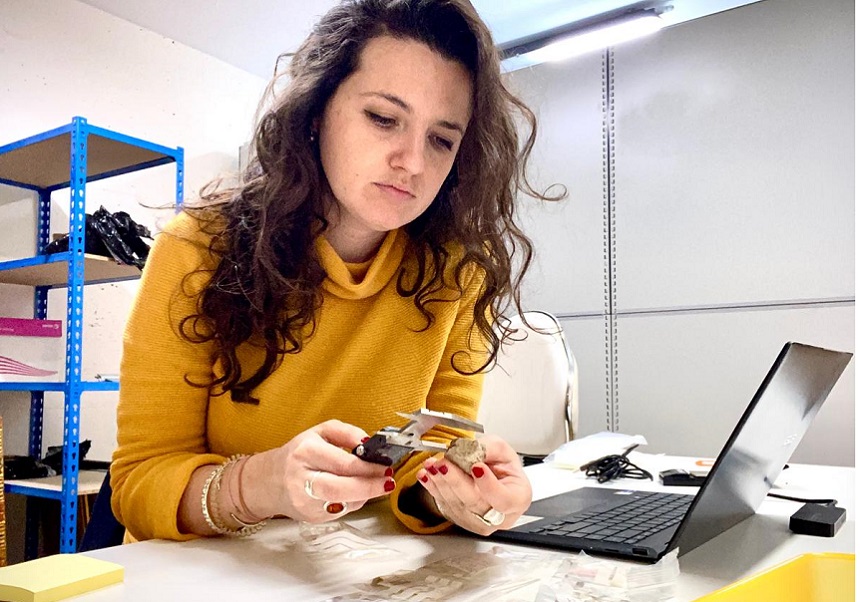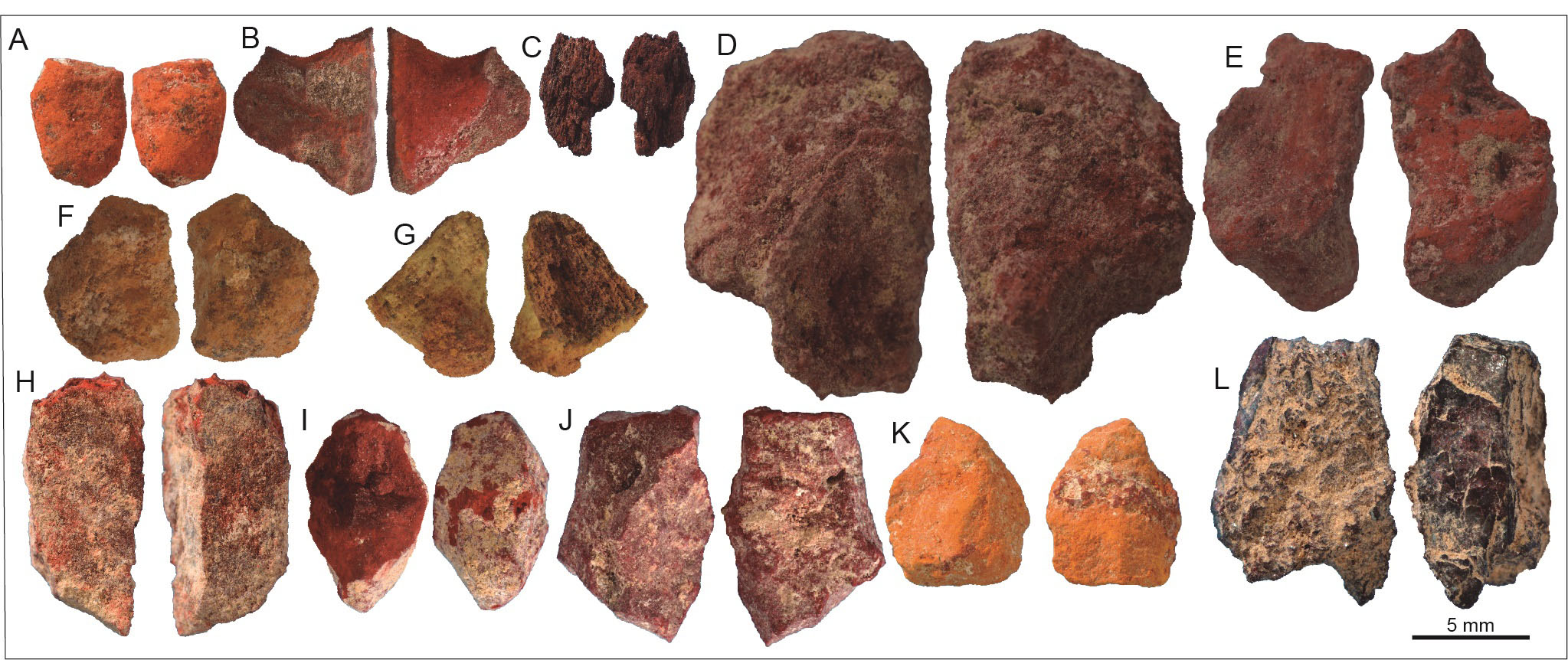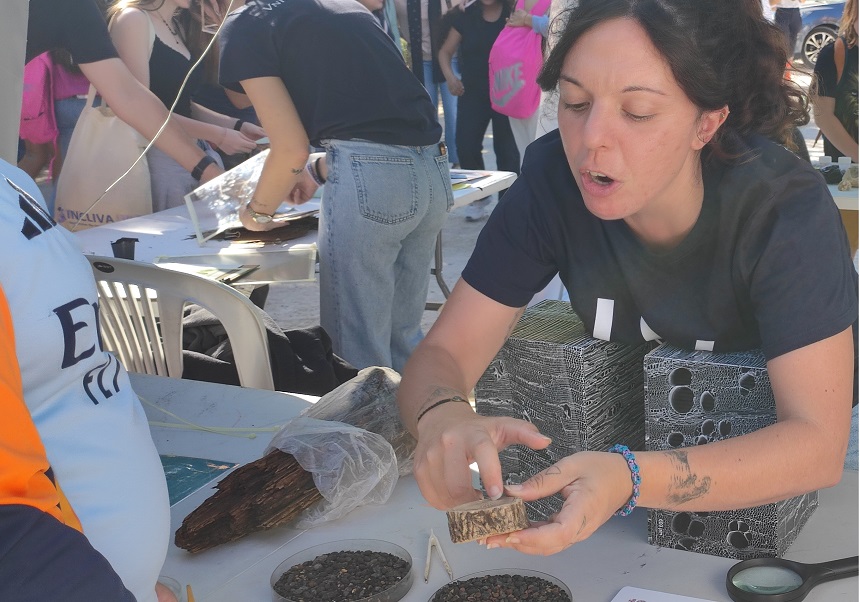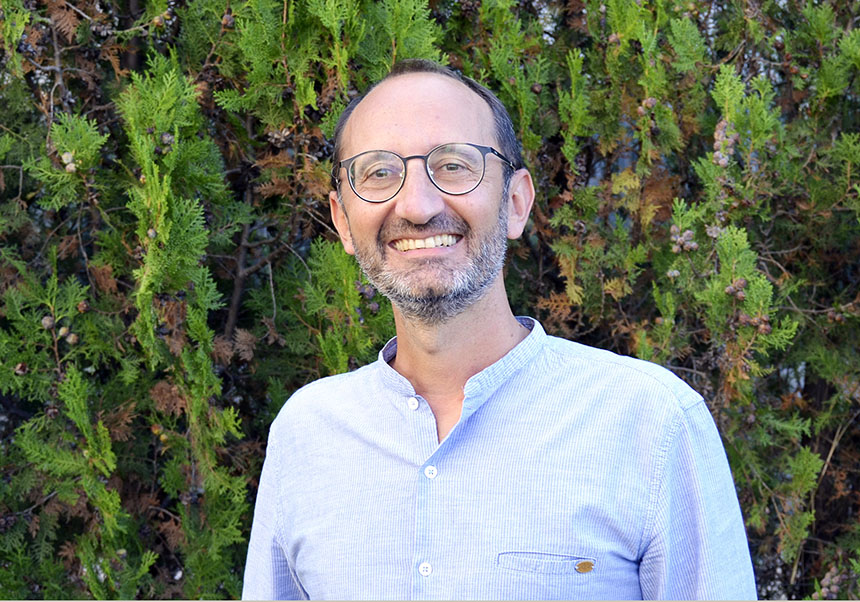Research finds evidence of continuous use of colourants during the Upper Palaeolithic in the southeast of the Iberian Peninsula
- Marketing and Communication Service
- Scientific Culture and Innovation Unit
- September 23rd, 2025

An international research team, including Daniela Rosso from the University of Valencia (UV), has studied the assemblages of colourants discovered at two exceptional Palaeolithic sites in the southeast of the Iberian Peninsula: Finca Doña Martina and Abrigo de la Boja, both located in Mula (Murcia, Spain). The findings reveal a complex use of colouring materials that persisted throughout the Upper Palaeolithic. The study, published in the Journal of Archaeological Science, provides insights into the exploitation and use of these materials by hunter-gatherer societies that inhabited the region between 37,000 and 10,000 years ago.
“The discoveries at these sites offer a unique opportunity to understand the processes of transmission and evolution of cultural practices such as the use of colouring materials during a crucial period for the development of complex cultures”, explains Daniela Rosso, researcher in the Department of Prehistory, Archaeology and Ancient History at the UV.
The results show that the inhabitants of these sites used colourants rich in iron oxides (reds) continuously from the Aurignacian to the Magdalenian periods. Only in the final stages of the Upper Palaeolithic (Epipalaeolithic) was there a decline in the use of colouring materials. The sources of supply, access to outcrops and exchange networks probably evolved over time, and during the Magdalenian period may have become more diverse.
The use of colour is a recurring feature in Upper Palaeolithic sites and is considered a key indicator of complex behaviour. In recent years, research into this cultural trait has focused primarily on parietal art, especially on the composition and origin of pigments. However, systematic studies of colourants in residential contexts remain scarce, even though they are essential for understanding other potential functions of these materials, whether utilitarian or symbolic, as well as the technical processes involved in their procurement, processing and use.
The research team, which also includes Àfrica Pitarch (University of Barcelona), François Orange (Université Côte d’Azur), Josefina Zapata (University of Murcia) and João Zilhão (University of Lisbon), analysed 35 fragments of pigments from Finca Doña Martina and 407 pieces from La Boja, covering the entire Upper Palaeolithic sequence. These materials were studied using a combination of technological analysis and elemental and mineralogical characterisation, both of the archaeological colourants and of natural samples collected from outcrops near the sites.
Once transported to the site, the colourant was broken up and ground to obtain powder. This single processing technique was used systematically throughout the entire sequence, probably to produce colourant powder for both symbolic and functional purposes. The absence of variation across different cultural layers indicates a technical system that persisted and was consistently transmitted over time, despite possible changes in raw material procurement strategies.
This study of the rock-shelters at La Boja and Finca Doña Martina represents a first step in systematically documenting a key cultural feature of the Upper Palaeolithic in the southeast of the Iberian Peninsula. “Our results not only expand our understanding of the use of colouring materials in habitation contexts but also provide valuable insights into transmission mechanisms and the evolution of cultural practices at a crucial moment for the development of complex societies”, explains Daniela Rosso.
Article reference: Daniela Eugenia Rosso et al., Journal of Archaeological Science, https://doi.org/10.1016/j.jas.2025.106342
Captions:
- Colouring materials from Abrigo de la Boja and Finca Doña Martina
- Surroundings of the sites (Rambla Perea)




















